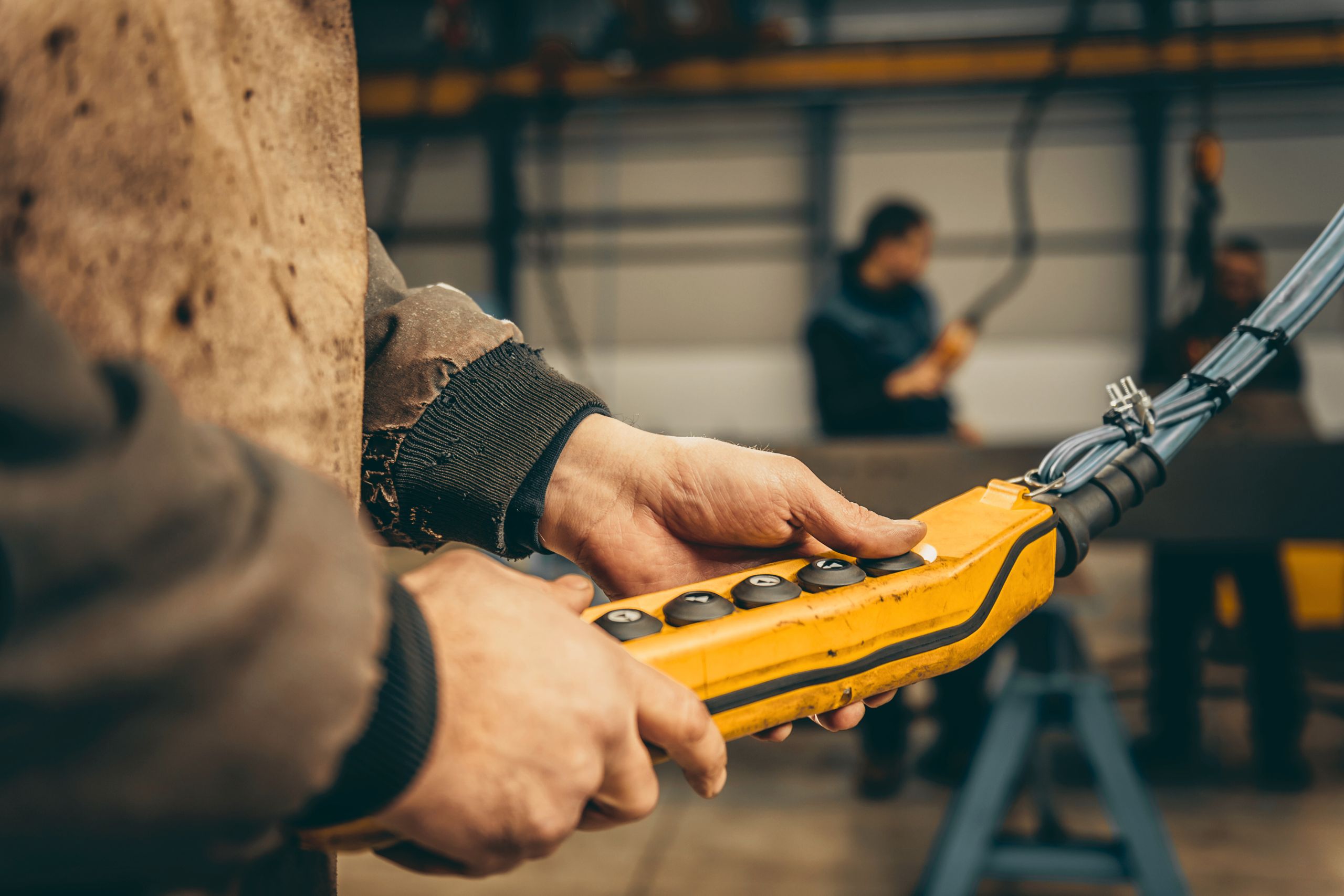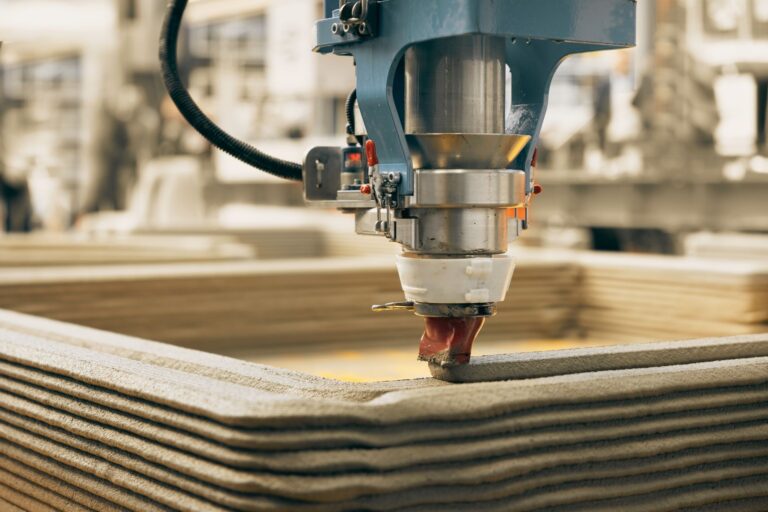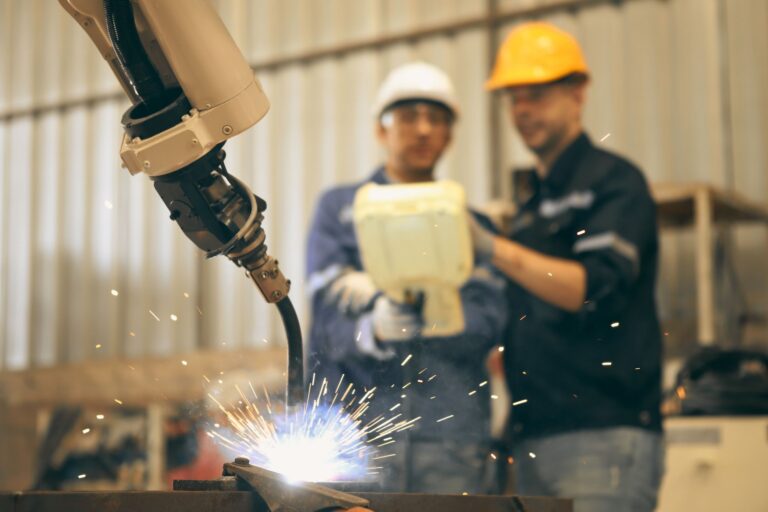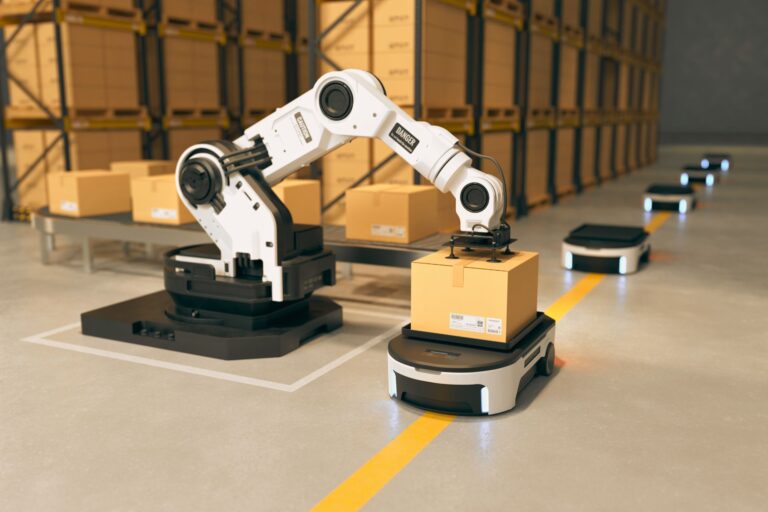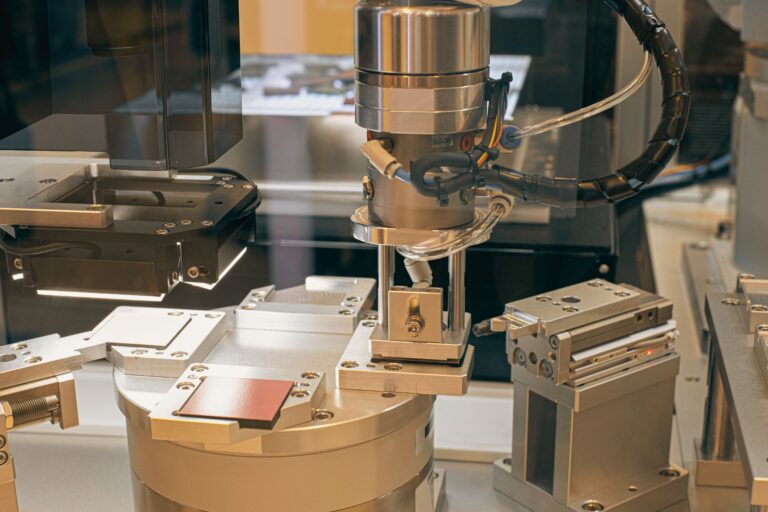Anti-Sway Control and Precision Positioning: Safer, Faster Loading and Unloading
Load swing is one of the main causes of slower speeds, inaccuracies and risks in lifting operations. Modern crane drives and anti-sway control algorithms allow for smooth movement, quick load “settling” and “on point” positioning – the result is shorter cycle times, higher safety and less operator fatigue.
What is anti-sway steering?
Anti-sway is a method of limiting/suppressing load sway by combining:
- acceleration/braking profiles (S-curve, jerk-control);
- corrective commands to the trolley/bridge according to the angle and speed of the swing;
- soft limits and safety zones.
The basis is pendulum models (rope/chain load) and state observers that estimate the deviation and apply feedback. In the event of displacements and sudden changes in direction, the system “anticipates” the dynamics and compensates to achieve minimal swing when stopping above the target point.
What is the system made of?
- Frequency inverters for lift/trolley/bridge with options for motion profiles and external feedback.
- Sensors/observers: encoders for position/velocity, load measurement; if needed – IMU/lidar for advanced deviation measurement.
- Controller/PLC with software module for anti-sway, precise positioning and zoning.
- HMI/radio control with modes: automatic approach (slow-approach), recipe positions, axis and height limits.
Precise positioning: "on point" without trial and error
- Recipe positions and target coordinates along X/Y/Z for frequently repeated operations.
- Slow approach: automatic speed reduction when approaching to avoid impact loads.
- Virtual zones: prohibited areas (machines, racks), cargo dimensions and traffic corridors.
Safety and productivity benefits
- Lower risk of accidents: The load stabilizes quickly; contact with equipment and people is reduced.
- Shorter cycles: higher transit speed without compromising control; less time for "calming down".
- Less operator fatigue: The system helps with final positioning; fewer adjustments.
- Lower defect and damage: Controlled acceleration and soft braking protect loads and attachments.
- Energy efficiency: Optimized profiles and regenerative braking limit consumption and heat loss.
Where is the effect greatest?
- Repeatable routes between fixed stations (machine → buffer → expedition).
- Long transfers with high hooks and large loads (more pronounced swaying).
- Narrow corridors and dense infrastructurewhere zones and soft limits are required.
- Sensitive/delicate itemsthat do not tolerate shock loads.
Implementation in practice (step-by-step approach)
- Audit and measurement: current cycle times, swing amplitude, incidents/near-incidents, energy consumption.
- Pilot module on one crane/axis: anti-sway activation and positioning, base zones, operator training.
- Optimization: profile settings (acceleration/jerk), recipe positions, soft limits according to the geometry of the object.
- Integration: as needed – to ERP/WMS/CMMS for tasks, logs and maintenance.
- Scaling: unified parameters for the remaining cranes; periodic reviews of KPIs.
KPIs worth tracking
- Cycle time (mean and 95th percentile);
- Peak/average swing angle and stabilization time;
- Frequency of near misses/alarms;
- Energy consumption of movement/lifting;
- MTBF/MTTR of drives and mechanics.
The Bulgarian context: what to expect
- Infrastructure and crane class: compatibility of inverters/controllers; realistic goals according to mechanics.
- Environment and load: temperatures, dust, humidity; non-standard devices (crossbeams, magnetic beams, grippers).
- Training and procedures: operational instructions for working with slow-approach modes, zones and recipes; clear roles in manual/auto control.
How we approach
Anti-sway control and precise positioning shorten the time to stabilize the load, reduce the risk of accidents and facilitate the final “pick-up point” – especially with repetitive routes, narrow aisles and sensitive items. The actual effect depends on the mechanics, drives and the situation on site, so we approach it in stages: an audit of the current cycles and settings, a pilot with basic profiles and zones, followed by fine-tuning of parameters and operator modes.
If the topic is relevant to your processes, we can discuss specific constraints and possible implementation options – from adjusting motion profiles to adding soft-limits and “slow-approach” modes. Our goal is to outline realistic steps towards safer and faster loading and unloading, taking into account the available infrastructure and budget.

